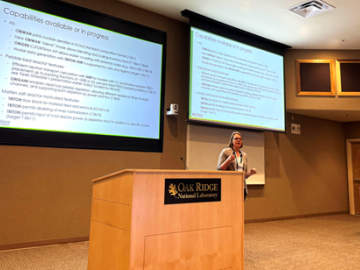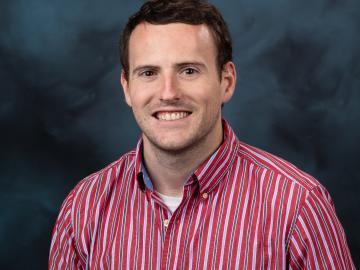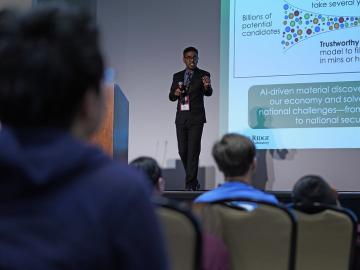
Filter News
Area of Research
News Type
News Topics
- (-) Advanced Reactors (5)
- (-) Artificial Intelligence (42)
- (-) Energy Storage (11)
- (-) Machine Learning (16)
- (-) Nanotechnology (5)
- (-) Nuclear Energy (18)
- (-) Physics (13)
- (-) Security (12)
- 3-D Printing/Advanced Manufacturing (29)
- Big Data (22)
- Bioenergy (15)
- Biology (18)
- Biomedical (16)
- Biotechnology (9)
- Buildings (24)
- Chemical Sciences (24)
- Clean Water (2)
- Composites (11)
- Computer Science (51)
- Critical Materials (6)
- Cybersecurity (3)
- Education (2)
- Emergency (2)
- Environment (27)
- Exascale Computing (25)
- Fossil Energy (3)
- Frontier (21)
- Fusion (13)
- Grid (16)
- High-Performance Computing (41)
- Hydropower (1)
- Isotopes (22)
- ITER (1)
- Materials (20)
- Materials Science (25)
- Mathematics (4)
- Microelectronics (2)
- Microscopy (5)
- Molten Salt (2)
- National Security (33)
- Neutron Science (27)
- Partnerships (29)
- Polymers (5)
- Quantum Computing (20)
- Quantum Science (24)
- Simulation (18)
- Space Exploration (4)
- Statistics (3)
- Summit (15)
- Transportation (15)
Media Contacts

Researchers conduct largest, most accurate molecular dynamics simulations to date of two million correlated electrons using Frontier, the world’s fastest supercomputer. The simulation, which exceed an exaflop using full double precision, is 1,000 times greater in size and speed than any quantum chemistry simulation of it's kind.

In the wet, muddy places where America’s rivers and lands meet the sea, scientists from the Department of Energy’s Oak Ridge National Laboratory are unearthing clues to better understand how these vital landscapes are evolving under climate change.

SCALE users from 85 organizations across 21 countries gathered online and in person at Oak Ridge National Laboratory from June 5 to June 7 for the Eighth Annual SCALE Users Group Workshop. The meeting included 32 presentations and 14 hands-on tutorials on impactful and innovative applications of SCALE.

ORNL's Guang Yang and Andrew Westover have been selected to join the first cohort of DOE’s Advanced Research Projects Agency-Energy Inspiring Generations of New Innovators to Impact Technologies in Energy 2024 program. The program supports early career scientists and engineers in their work to convert disruptive ideas into impactful energy technologies.

Andrew Conant from ORNL's nuclear nonproliferation division is collaborating with national laboratories to analyze isotopes generated in nuclear reactors. This research aims to glean insights into the operations and objectives of these reactors. ORNL, renowned for its leadership in nuclear research, maintains its legacy by promoting the peaceful utilization of nuclear energy worldwide.

ORNL researchers completed successful testing of a gallium nitride transistor for use in more accurate sensors operating near the core of a nuclear reactor. This is an important technical advance particularly for monitoring new, compact.

Researchers used quantum simulations to obtain new insights into the nature of neutrinos — the mysterious subatomic particles that abound throughout the universe — and their role in the deaths of massive stars.

In May, the Department of Energy’s Oak Ridge and Brookhaven national laboratories co-hosted the 15th annual International Particle Accelerator Conference, or IPAC, at the Music City Center in Nashville, Tennessee.

Prasanna Balaprakash, a national leader in artificial intelligence, or AI, spoke to some of the highest achieving students in the country at the National Science Bowl in Washington D.C.

When Oak Ridge National Laboratory's science mission takes staff off-campus, the lab’s safety principles follow. That’s true even in the high mountain passes of Washington and Oregon, where ORNL scientists are tracking a tree species — and where wildfires have become more frequent and widespread.


